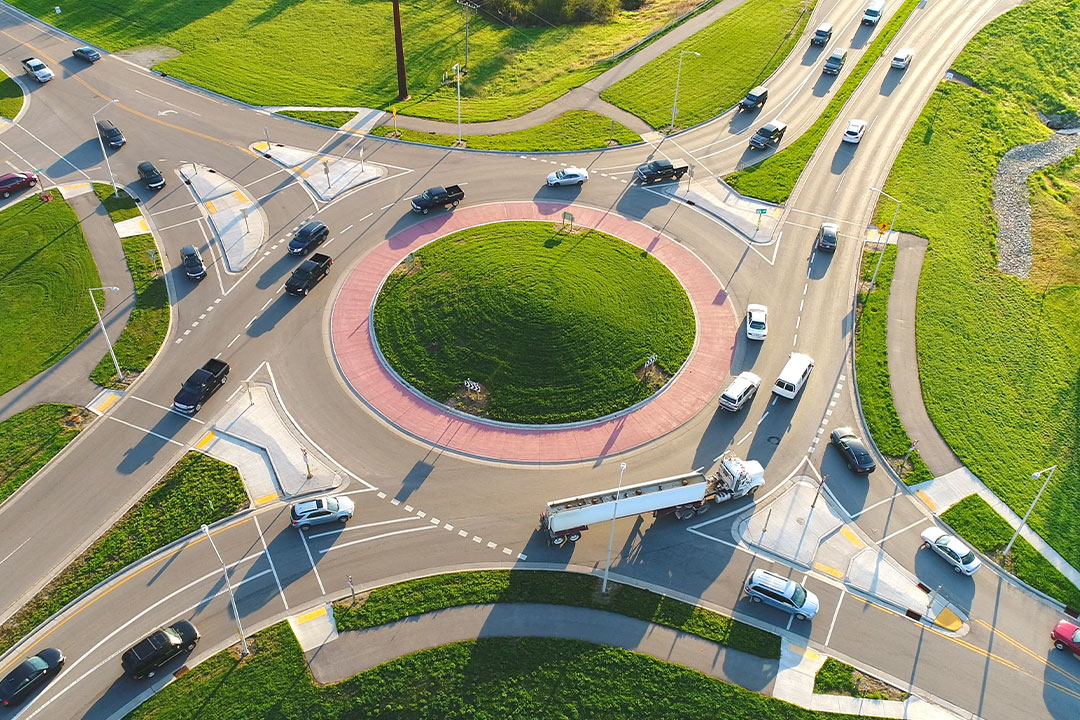Roundabouts, also known as traffic circles, have slowly been added into our everyday commutes. As a way to navigate an intersection, roundabouts direct traffic in a one-way circle with multiple exit points. In Missouri, they can be seen in Forest Park, off highway 109 in Wildwood and a new one is proposed near Oakville Elementary and High School. While these are generally safer than most intersections, this does not mean you are free from a potential roundabout accident.
Why are roundabouts considered safer than intersections?
Roundabouts are a “proven safety countermeasure” due to their ability to reduce serious car and trucking accidents in intersections. According to the Missouri Department of Transportation, roundabouts have “fewer conflict points,” which refers to the amount of areas or spots where vehicles could collide. In an intersection with traffic lights, there can be upwards of 20 conflict points while a roundabout drops this statistic by over half to eight contact points. This translates into nearly 76% fewer roundabout accidents.
How do I drive properly to avoid a roundabout accident?
The first thing to remember when you approach a roundabout is to yield. Roundabouts require all drivers to yield before entering to all cars driving inside the circle. For a single lane roundabout like in Forest Park or Tower Grove Park, this means you let the car inside the roundabout go past you before you can safely enter the roundabout and continue on to your destination.
How do roundabout accidents happen?
While roundabouts may be safer statistically, they are not free from the occasional crash. In most cases, roundabout accidents may be caused by:
- Failure to yield for vehicles in the roundabout. You must yield to other vehicles who are already moving within the roundabout. A failure to yield may cause a rear-end collision or a sideswipe accident.
- Failure to yield for pedestrians and cyclists. Clearly marked crosswalks for pedestrians and cyclists are commonly seen in roundabouts near parks. Remember to yield at these crosswalks before entering the roundabout.
- Speeding. Roundabouts slow down traffic because of the sharp turn one has to make to enter the circle. Speeding into a roundabout may cause you to hit another car turning into your lane or one of the concrete medians.
- Failure to use the proper lane in a double lane roundabout. When turning into a roundabout, drive into the lane you are currently coming from. This means if you are in the right lane, stay in the right lane when you enter the circle to prevent an accident.
- Stopping inside the roundabout. Once you enter the roundabout you must keep driving to get to your designated exit point. Stopping inside the continuously moving roundabout may cause a rear-end collision.
- Changing lanes or not using a turn signal to leave the roundabout. Just like on major roads, you must use adequate turning signals to move within and exit the roundabout. Failing to do so may result in a collision.
- Giving inadequate distance for larger vehicles such as trucks. To avoid a trucking accident inside a roundabout, give trucks more room to make their way through the roundabout.
Contact Muchnick Haber Margolis after a Roundabout Accident
While roundabout accidents may have lower impact than other crashes, they can still cause significant damage both physically and mentally. As truck and car accident lawyers in Missouri and Illinois, we are here to fight for the compensation you rightly deserve.
If you were hit while driving in a roundabout or were involved in another accident that was not your fault, contact our attorneys to learn more about how to file your case.
